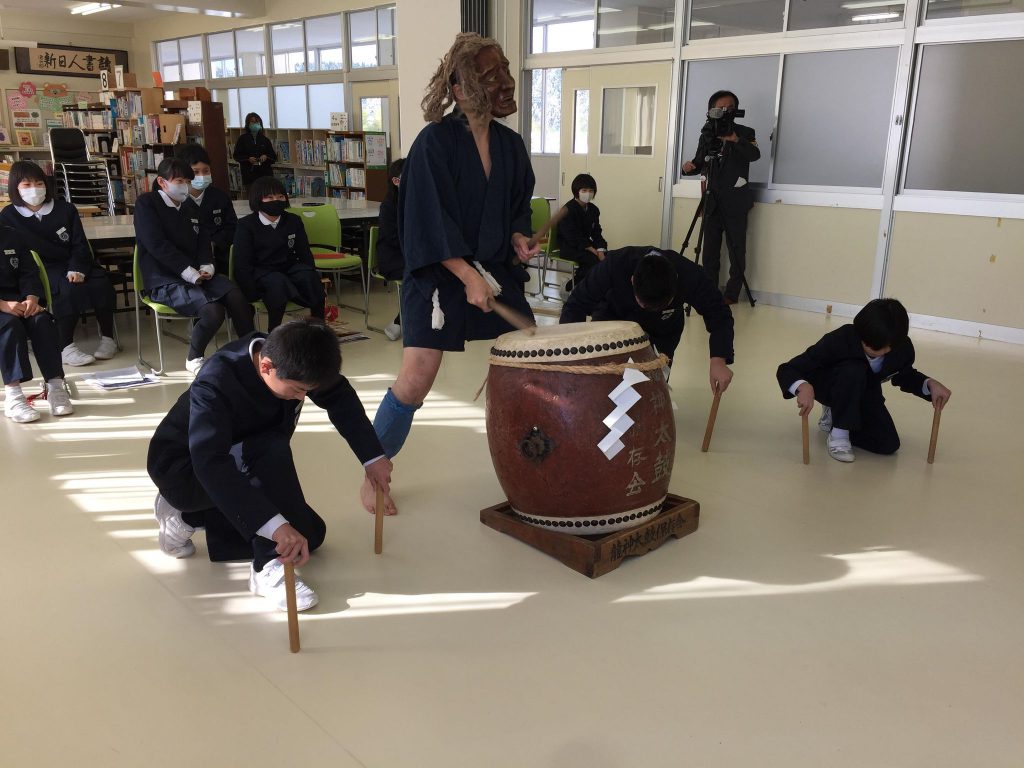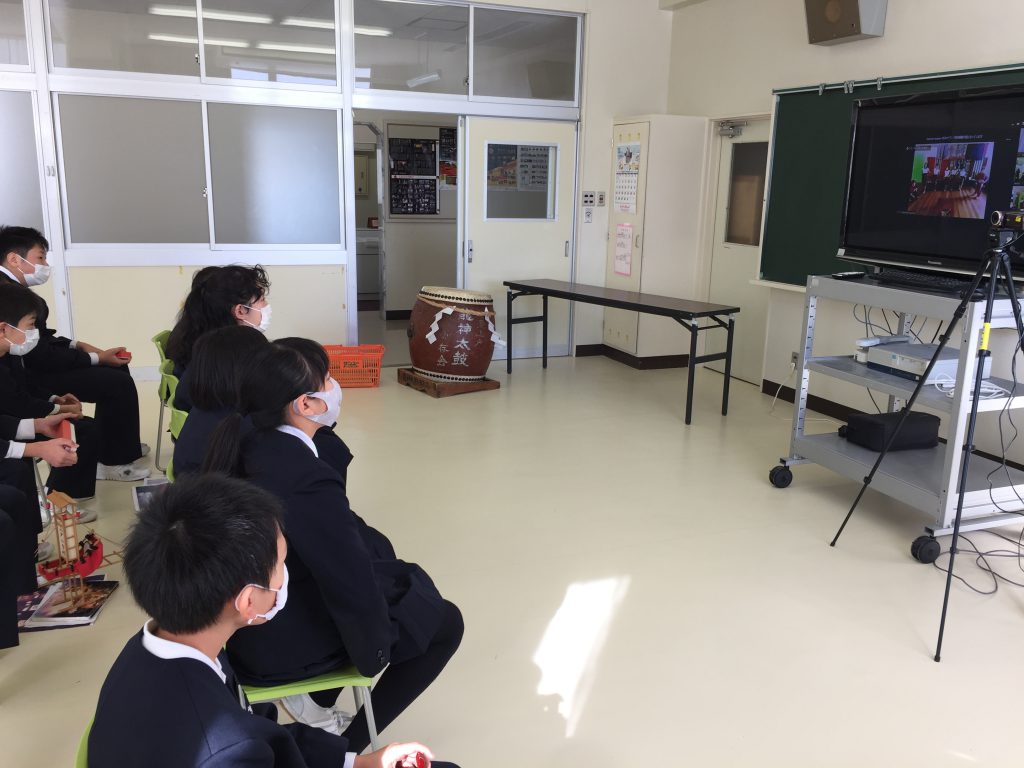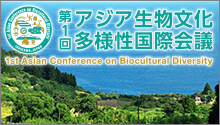The third session of Noto and Ifugao International Exchange Programme took place on December 17 (Thu), 2021.
See the programme’s first report and its backgroundhere.
See the programme’s second report here.
We learned about GIAHS “Noto Satoyama Satoumi” before the event.
First, we viewed the GIAHS’s DVD and learned why Noto was selected as a GIAHS (Globally Important Agricultural Systems) site and about the connection between GIAHS and the SDGs in Noto. Noto and Ifugao became GIAHS sites around the same time in 2011. It was reported that the Meister Programme, an adult education programme to preserve GIAHS, has been run in both areas, and interaction between its participants is continuing.
In the online exchange, Noto Uedo Elementary School pupils introduced Noto traditional culture. Firstly the “festival feast” was introduced. During festivals, feasts using regional and seasonal ingredients are prepared in order to invite guests to visit and have a feast, which differs depending on the house.
Next, kiriko lanterns used in Noto regional festivals were introduced. They light the path for the portable shrines during the parades. The festival in the Jike area of Suzu City takes place every September, in which gorgeous giant kiriko lanterns of height 16.5m (the largest in Japan) are used.
Lastly, the kyarage festival song was introduced. In the festival, boys wearing makeup and kimonos sing two kinds of songs using fans. Since they are the messengers of the God on the festival day, they cannot walk on the ground. Accordingly, the messengers are carried on people’s backs, and when they get off, they stand on a straw mat, not on the ground. They also ride on the floats. At the end of the programme, the students sang kyarage using fans. People of Ifugao listened to the pupils’ song and enjoyed the performance while clapping to the music.


Japanese drums were also introduced. The father of a pupil who participated in the programme gave a detailed explanation about the Ryujin Drum. The Ryujin Drum story has been passed down for 1000 years. The story says that in those days in the Noto area, people suffered from poor crops due to devils’ behaviors. Ryujin, the dragon god, defeated the devils. The Ryujin drum performance conveys the story. The pupil and his father gave an impressive, powerful drum performance. There was an issue with the video call when the sound was interrupted due to the loudness of the drum. However, we presume that the impressive performance was understood by participants through the visuals also.

Next, Ifugao people gave a presentation about traditional song and dance. Firstly, a teacher introduced their drums. He said, “your drums and ours are very similar. We also play drums”.



Then, instruments which are indispensable for Ifugao traditional music were introduced, including a metal musical instrument called a “gum” and a bamboo musical instrument. Next, Ifugao traditional songs were introduced. Pupils from Uedo Elemental School listened to a performance in which Ifugao people wore traditional costumes and sang rhythmically while playing the bamboo instrument.


The participants exchanged not only their cultures but also many questions about weather and lifestyles with each other. As this was the final meeting of the programme, a commemorative photo was taken. The online exchange is over for now, but we will explore new ways of interacting, such as the exchange of postcards. We hope the connection between Noto and Ifugao children will continue into the future.





